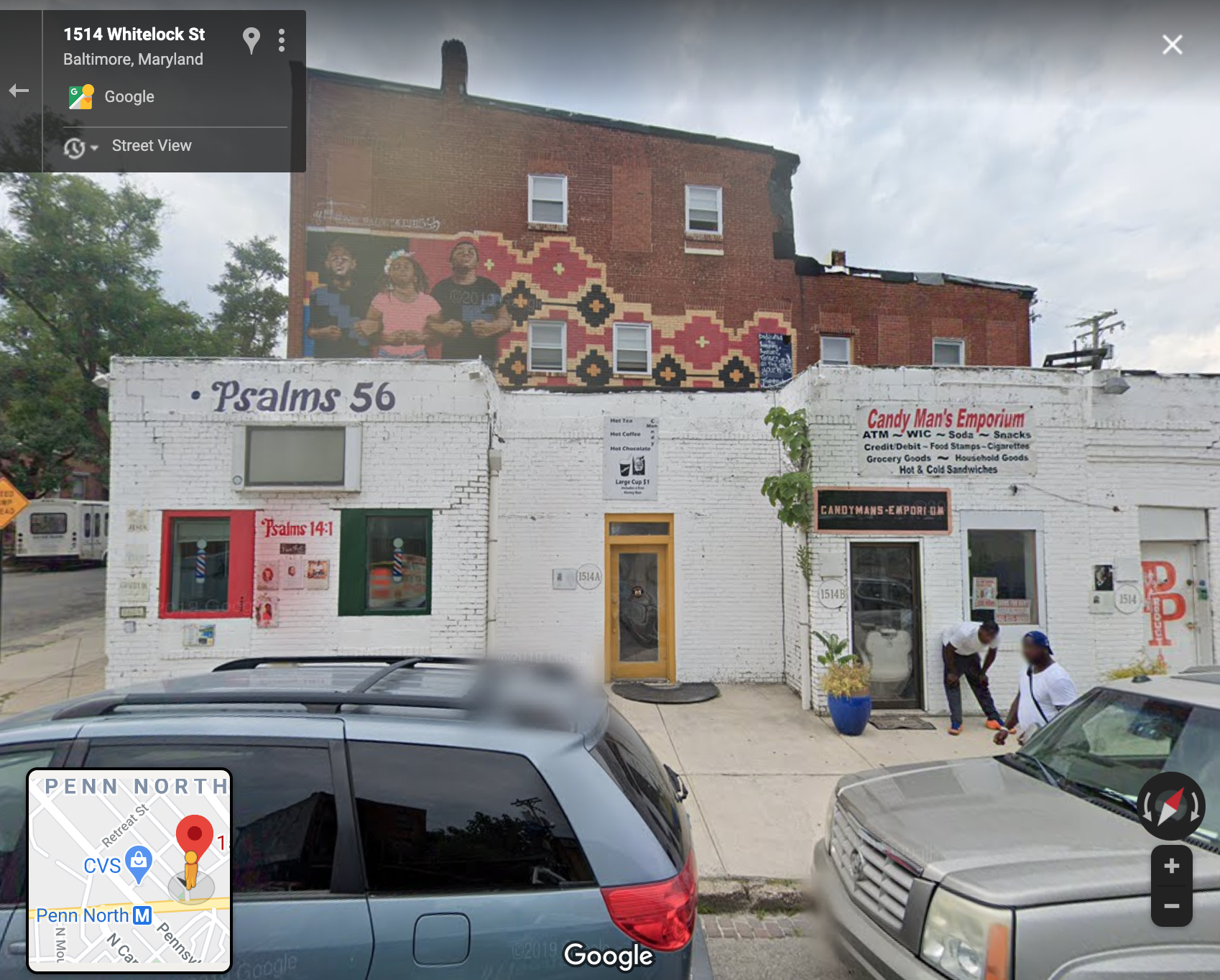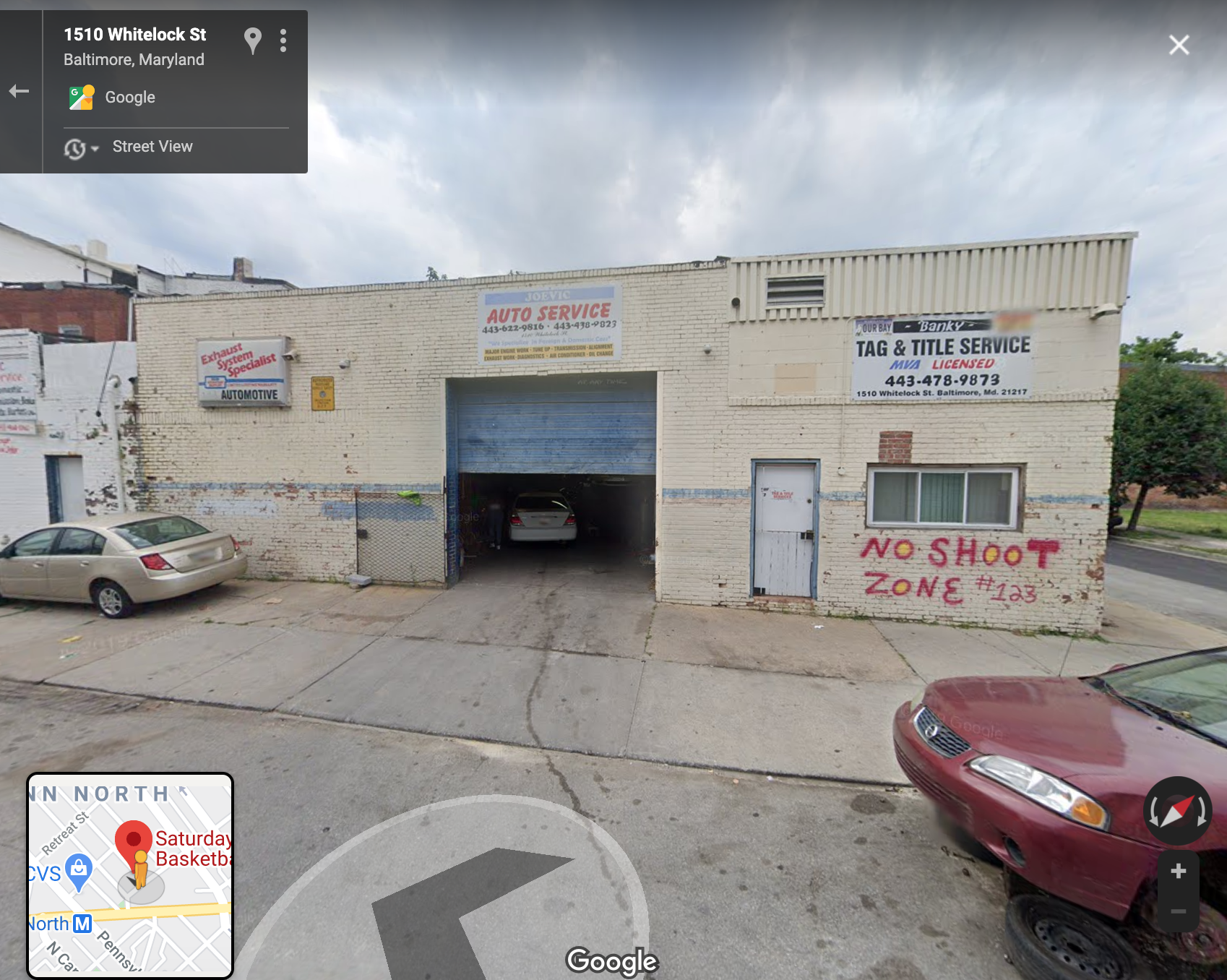Republican activist Kim Klacik first garnered national attention when U.S. President Donald Trump shared one her tweets with his millions of followers in July 2019, a post that showed trash surrounding some Baltimore homes and criticizing late Maryland Rep. Elijah E. Cummings, who had represented parts of the city for 23 years.
Then, roughly one year later, she released a new video on the social media platform, with a similar message. This time, however, with the explicit intent to convert Democrats to switch political parties in the upcoming 2020 election. She was campaigning to represent the area that Cummings did in Washington, D.C. — Maryland's 7th Congressional District — and Trump again used his social media popularity to spread Klacik's name by retweeting her video footage.
That 2020 campaign video, which had been viewed more than 11.4 million times as of this report, supposedly showed Klacik walking through Baltimore to highlight the city's amount of vacant, deteriorating homes and garbage under Democratic leadership. Klacik, who is Black, stated: "The Democrat Party has betrayed the Black people of Baltimore. If the politicians walked the streets like I do, they would see exactly how their policies and corruption affects us."
Snopes analyzed Klacik's pattern of using social media to criticize living conditions in Baltimore, which had caught the eye of the president and Fox News on multiple occasions. We also studied demographic data and Google Maps footage to determine if, or to what extent, her claims about the city were true.
We also broke down where, exactly, filming took place for the 2020 viral ad — which, in part, earned Klacik a spot to speak alongside party leaders at the Republican National Convention on Aug. 24, 2020. (Watch her remarks here.) We should note here: Klacik's campaign did not respond to our requests for comment, which included questions about her walking route in the campaign video.
Who is Kim Klacik?
Klacik, 38, was the leader of a Baltimore-based nonprofit that helps low-income women prepare for new careers when one of her tweets about the city was first retweeted by Trump and went viral. She was also one of 28 members on Baltimore County's Republican Central Committee.
She attended Bowie State University, a public, historically Black university in Prince George's County, but said she dropped out of college after being bullied over a medical condition called alopecia that caused her hair to fall out, according to The Baltimore Sun.
A resident of Middle River — an unincorporated community that's roughly a 20-minute drive from Baltimore and outside the congressional district for which she was running — she is married with a 3-year-old daughter, the newspaper reported.
Klacik's July 27, 2019, Twitter post about Baltimore, which is displayed below, was shared by Trump as part of his aggressive campaign against Cummings, who at the time chaired the House Oversight and Reform Committee and was leading a probe into the Trump administration's role in locking up migrant children at the America-Mexico border. The president alleged conditions at the border facilities were better and less dangerous than Cummings' Baltimore-area district.
Cummings, who was also a key player in an impeachment inquiry against the president, died of complications from long-term health issues months later, on Oct. 17, 2019. The state of Maryland in spring 2020 held a special election to fulfill the remainder of his term, for which Klacik harnessed her new attention from the president and Fox News to launch a campaign.
She lost, however, by a 3-to-1 margin, to her Democratic competitor Kweisi Mfume, 71, a former Baltimore City Council member who represented the 7th District for a decade before becoming president of the NAACP.
As of this writing, Klacik was running another campaign against Mfume — this time for a full two-year term, by attempting to win the majority of voters' support in the November 2020 general election.
The viral campaign ad, which we unpack frame-by-frame below, was a leading tool in spreading her 2020 platform, which she told The Baltimore Sun not only includes supporting Trump's ideas for the economy but also expanding people's access to over-the-counter birth control bills, supporting paid family leave, raising wages for teachers and social workers, encouraging homeownership, and improving oversight of federal money.
Maryland’s 7th District spans half of Baltimore, as well as sections of the more affluent Howard and Baltimore counties (see the map below courtesy of GovTrack.us), and Klacik has pledged to move there if voters elect her to Congress.
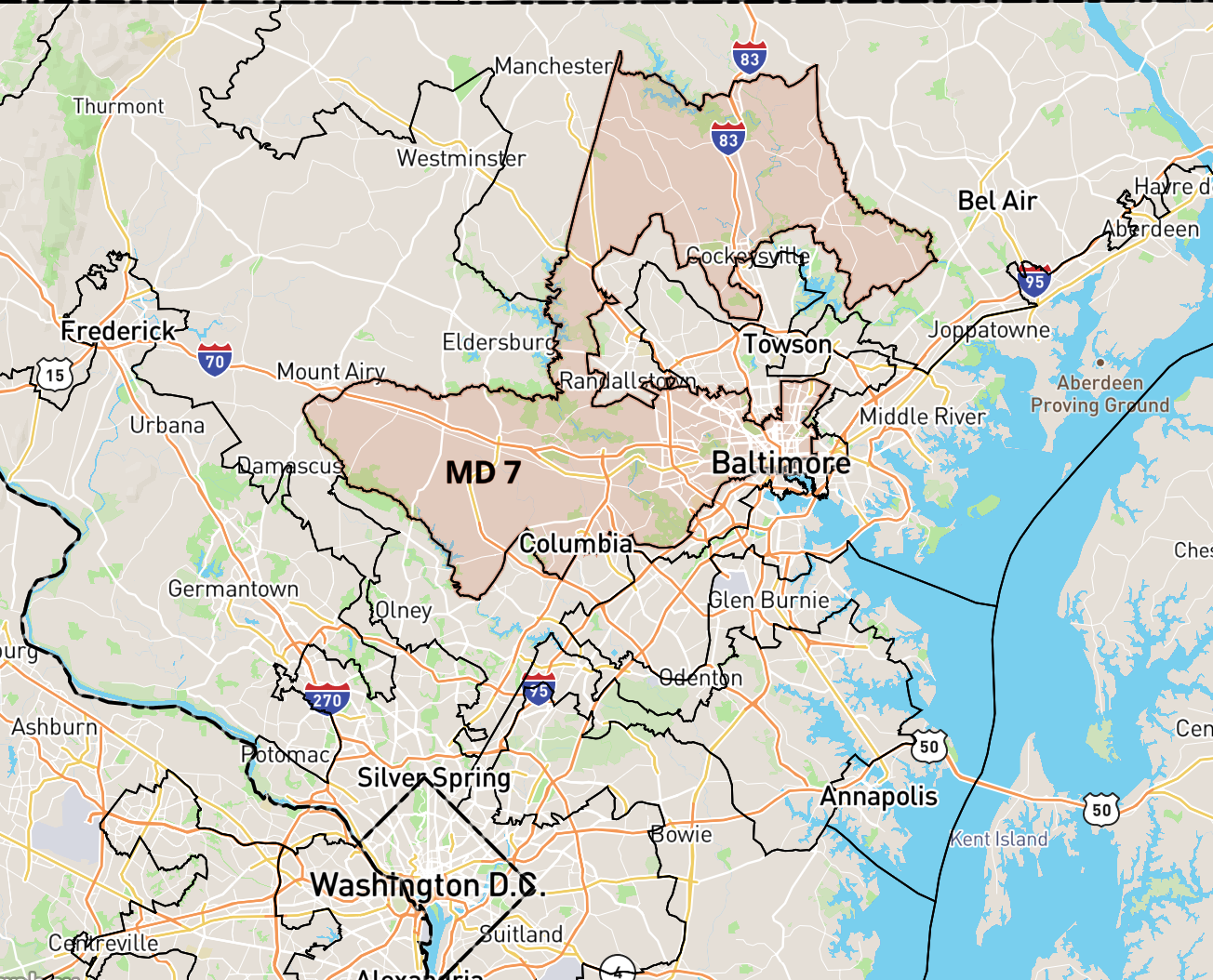
Where Was Klacik's 2020 Viral Campaign Ad Shot?
On Aug. 17, 2020, the Republican candidate posted the roughly 2.5-minute clip on Twitter that showed her walking next to mostly brick, multi-level rowhouses and garbage, and was framed as a fair representation of Baltimore's deteriorating living conditions without explaining where, exactly, she was being filmed. The video included the narration:
Do you care about Black lives? The people who run Baltimore don't. I can prove it — walk with me. ...
This is the reality for Black people every single day: crumbling infrastructure, abandoned homes, poverty, and crime. ...
It's not just Baltimore. The worst place for a Black person to live in America is a Democrat-controlled city. It's 2020. Name a blue city where Black people's lives have gotten better. Try — I'll wait. ...
Democrats think Black people are stupid. They think they can control us forever; that we won't demand better and that we'll keep voting for them forever, despite what they've done for our families and communities.
Some of the video's first frames showed Klacik crossing an intersection in front of a mid-rise building with a sign reading "Sugar Hill Liquor." Multi-family housing and some commercial spaces also appeared to be adjacent to that property, and line the opposite side of the street.
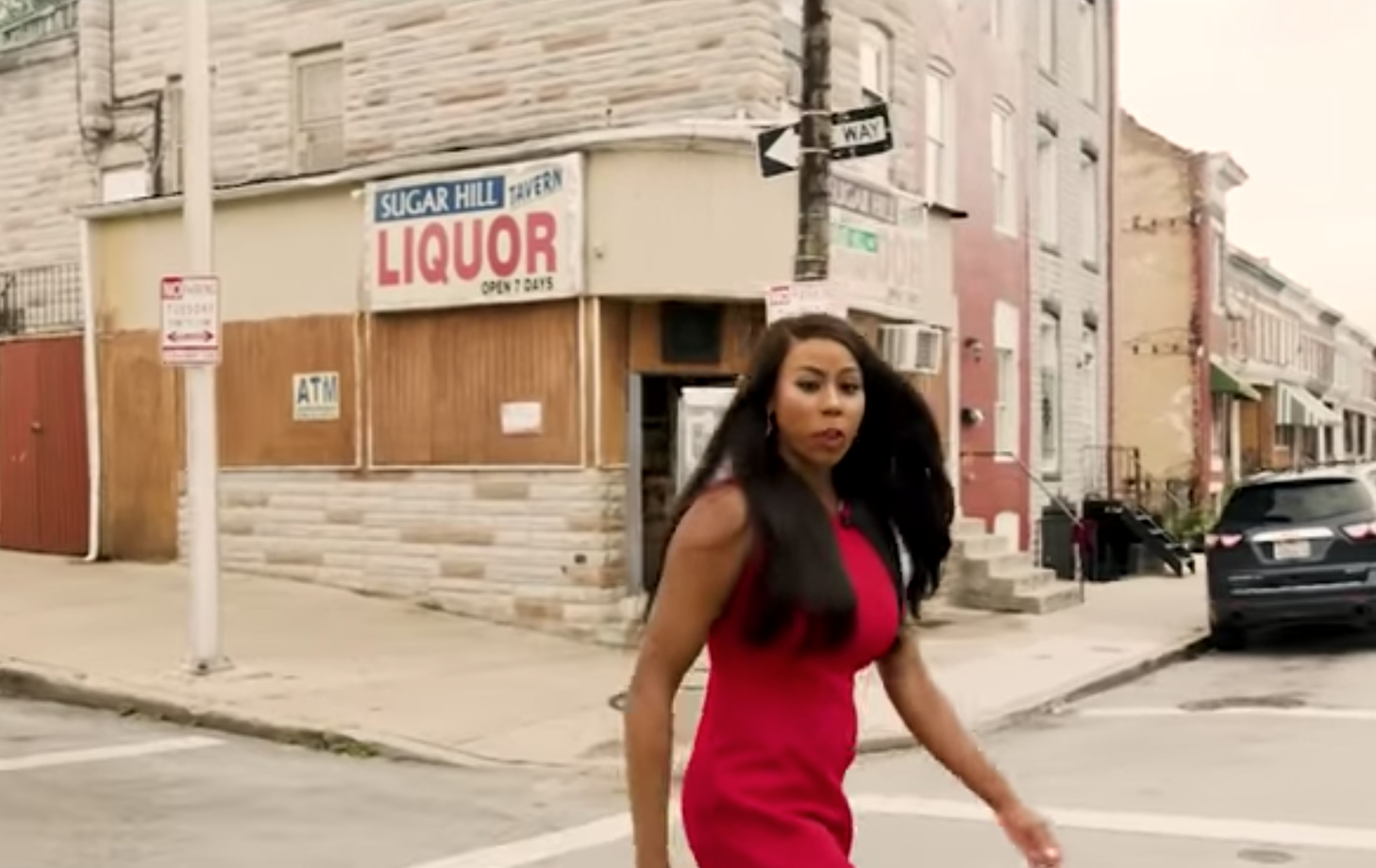
According to our analysis of Google Map footage, which was captured in July 2019, she was walking southwest on Whitelock Street, crossing Druid Hill Avenue, and the sign was for a bar called Sugar Hill Tavern on that building's ground level. With those indicators, we were able to conclude Klacik's video was shot in the city's Penn North neighborhood in West Baltimore, and captured the real conditions of some properties in that area. That region is within the state's congressional district for which she was running to serve.
The frames that followed showed Klacik walking in front of boarded up rowhouses without any specific indicators on what street she was walking.
But in the eighth shot, Klacik walked in front of buildings she had already passed on Whitelock Street in earlier frames — a finding based on a building's deteriorating siding and the property's distinct "Love" graffiti tag, which we compared with Google Maps' street view.
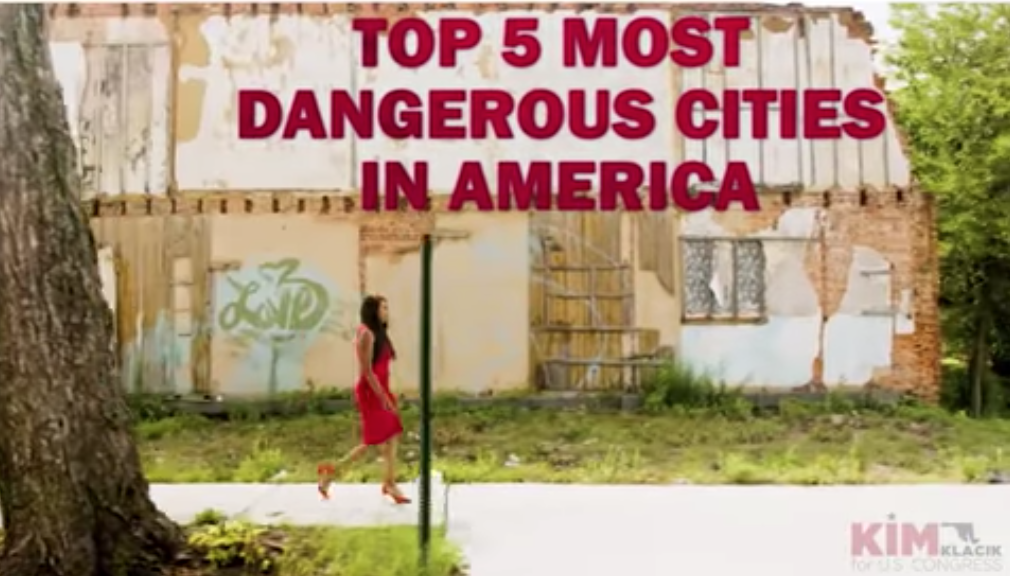
That evidence showed that although Klacik's campaign framed the video as one, long walk through a Baltimore neighborhood, the footage depicted at least one intersection of Penn North more than once.
The video's ninth frame also showed Klacik walking the same area of Whitelock Street in the same direction, but this time, on the opposite sidewalk, since Sugar Hill Tavern and its neighboring properties could be seen in the background.
Later, she was recorded standing on what appeared to be the roof of a building, and a white building with an "Auto Service" sign and other multi-level properties could be seen in the video's background, across the street. She also was filmed on the roof of a building for the final scene of the video, where she ends with, “Black people don’t have to vote Democrat.”
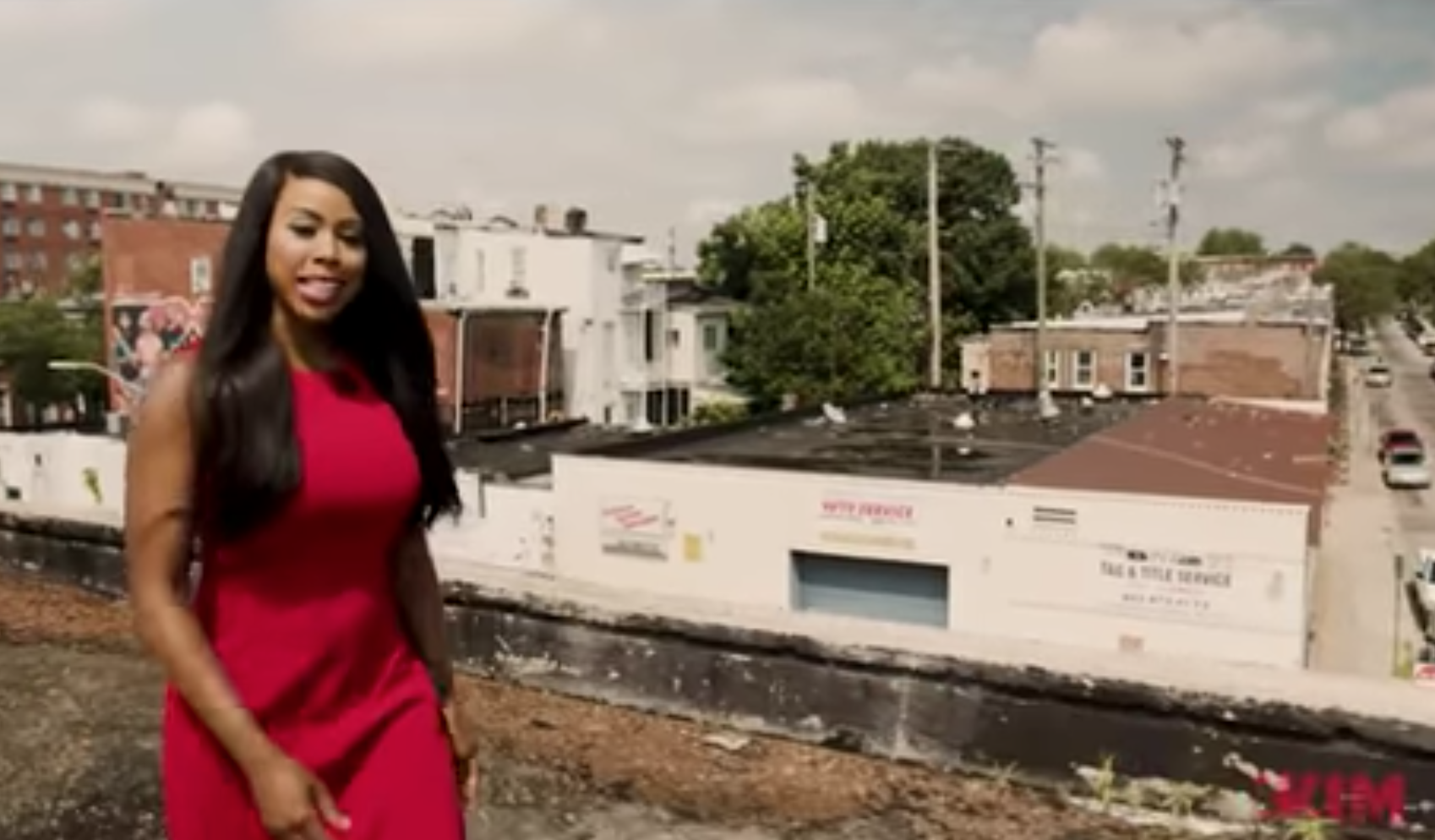
Those buildings included a large mural of a diamond pattern and three people standing together, an indicator of another filming location.
Using that information, we studied the neighborhood via Google Maps' street view to find any evidence of the sign or mural, and we learned Klacik had, indeed, been standing on the roof of a building on Whitelock Street, across the corridor from businesses that included an auto repair shop.
Next, Snopes used that research to figure out the distance between the roof filming location and the video's earlier frames near the Sugar Hill Tavern. According to Google Maps, there's a 2-minute walking distance between the two West Baltimore locations.
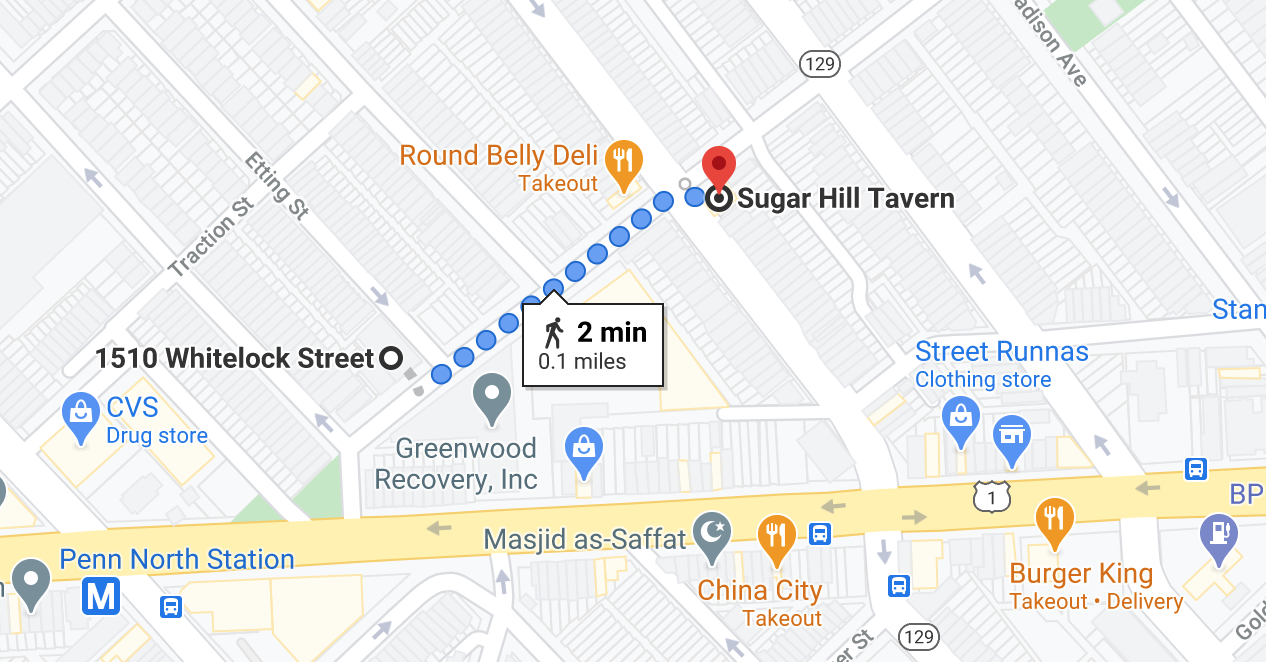
In other words, though Klacik's viral campaign video did not show one continuous walking route through Baltimore, as it alleged, it did capture the conditions of properties along the same corridor in the same neighborhood.
Other frames showed more nondescript, multi-level buildings, as well as interviews with whom the campaign framed as "real Baltimore residents" about the role of police in the city. The video footage also showcased random piles of garbage; a shattered glass window of an unknown building, and an aerial view of two properties without roofs that appeared to have sustained fire damage or other destruction, making them inhabitable.
On Aug. 19, 2020, two days after the video's initial release, Klacik said on Twitter that Benny Johnson, the chief creative officer for the conservative propaganda group Turning Point USA, was the "mastermind" behind the video's concept.
Is Klacik's Viral Ad an Accurate Depiction of Baltimore?
On Aug. 19, 2020, The Baltimore Sun's editorial board published a scathing commentary on Klacik's video message, claiming that she was placing inappropriate blame on Democratic leadership for "ruining" the city since she was not campaigning for Baltimore mayor or a seat on the Baltimore City Council but rather running for a congressional seat that not only covered the West Baltimore neighborhood, but some of the metro's well-to-do suburbs, as well. The board stated:
Whatever one may think of members of Congress, they don’t run cities, counties or even states, they represent one of 435 votes in one chamber of the federal legislative branch. Maryland’s 7th extends far beyond the city to Howard and Baltimore counties.
[It's] ludicrous and overly simple to blame the city’s ills on party affiliation. Concentrated poverty, substance abuse and a war on drugs that disproportionately criminalized low-income African Americans, racism and red-lining, the loss of blue collar jobs, collapsing public infrastructure, broken families and failing schools, these are among the major culprits. ...
Once again, Baltimore is made to play the role of Urban Horror and to scare people who have never been here, will never visit and likely will never realize that, overall, average household income in the 7th District is above the national average.
Overall, the board alleged Klacik used a neighborhood in West Baltimore to construct a political message that would resonate with voters nationally, and help Trump in his race for reelection against Democratic nominee Joe Biden on Nov. 3. Meanwhile, the board said the video did not accurately represent what it is like for most residents of Maryland's 7th Congressional District.
To determine if there was any credibility to that assertion, we compared the latest U.S. census data for the district and the city of Baltimore, since that was where scenes of the ad were shot, using the statistical table below.
| Maryland's 7th Congressional District (see here) | Baltimore City (see here) | |
| Total Population | 716,136 people | 602,495 people |
| Black Population | 51.9% (371,523 people) | 61.3% (369,090 people) |
| White Population | 32.6% (233,481 people) | 27.7% (166,647 people) |
| Median Household Income
|
$60,729 | $51,000 |
| Individuals Below Poverty Line
|
14.8% (27,050 people) | 24.1% (29,166 people) |
| Vacant Housing Units
|
15.6% (49,845 properties) | 19.2% (56,429 properties) |
Based on that data, it was accurate to claim that the area for which Klacik was running to represent was whiter and wealthier than the city where she had recorded the campaign video, and it had less abandoned buildings. The Associated Press reported in July 2019, after Trump alleged the congressional district, which was then represented by Cummings, was a "disgusting, rat and rodent infested mess":
While parts of Maryland’s 7th Congressional District have struggled with poverty and crime, it also includes more affluent areas and Baltimore landmarks such as Johns Hopkins University and its hospital, the Social Security Administration and the Centers for Medicare and Medicaid Services. Elsewhere are cultural touchstones like the Baltimore Museum of Art and the world-class Walters Art Museum. ...
Trump’s tweets paint an incomplete picture of a sprawling district that spans Baltimore City and parts of surrounding counties. It has stretches of empty storefronts and boarded-up homes, as well as trendy neighborhoods dotted with manicured parks and restaurants. It also has Pimlico Race Course, which is home to the Preakness Stakes, the second jewel of horse-racing’s annual Triple Crown.
Baltimore residents said their city bears no resemblance to the place Trump described, though few would deny the city has problems with violent crime and drugs, per The Associated Press.
Next, we considered statistics for the neighborhood that was the filming location for at least portions of the campaign video — Baltimore's Penn North neighborhood — to determine its socioeconomic levels and if, or to what extent, they matched all Baltimore neighborhoods, since the ad suggested the neighborhood's conditions were representative of the entire city. We learned the area's residents are often combined with the adjacent Reservoir Hill neighborhood for reviews by the city's health department.
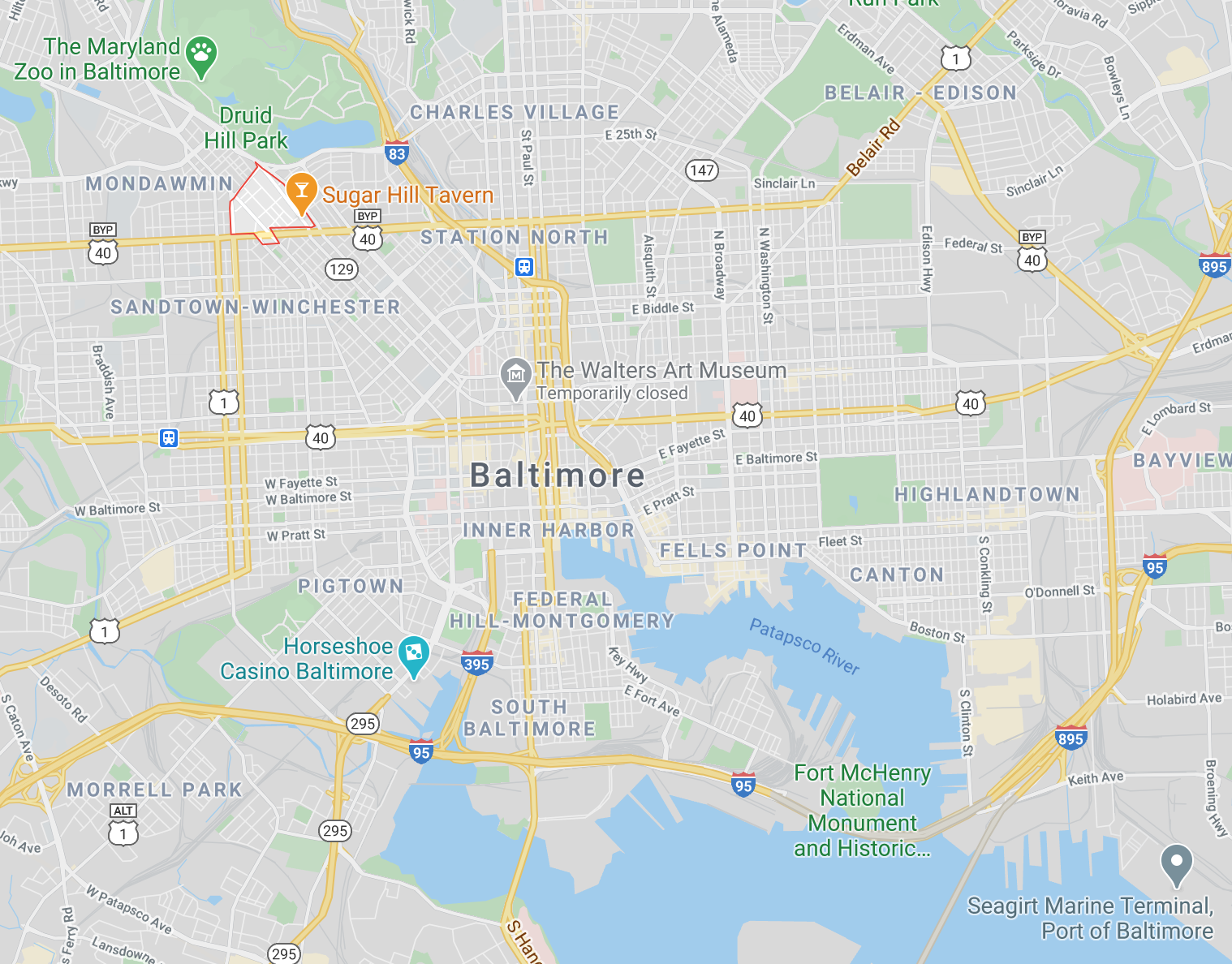
According to a 2017 analysis by the Baltimore City Health Department, which essentially distilled census data for neighborhood-by-neighborhood analysis, the following was true:
| Penn North/Reservoir Hill | Baltimore City | |
| Total Population | 10,576 people | 622,454 people |
| Black Population | 85% | 62.8% |
| White Population | 10.9% | 30.3% |
| Median Household Income
|
$33,264 | $41,819 |
| Families Below Poverty Line
|
40.4% | 28.8% |
| Vacant Lots Per 10,000 Housing Units
|
466.9 | 677.3 |
In other words, the area where portions of the campaign video was filmed had a higher concentration of Black residents and families below the poverty line than the city overall, though a lower concentration of vacant lots per 10,000 housing units.
Additionally, the Penn North and Reservoir Hill neighborhoods tallied a slightly higher percentage of city requests for pest control because of rats (423.5 requests per 10,000 residents, compared to 408.8 per 10,000 Baltimore residents overall), and the neighborhoods' homicide rate was higher than all city neighborhoods (7.9 per 10,000 residents, compared to 3.9 per 10,000 city residents overall), the analysis showed.
Based on that statistical evaluation, we deemed it misleading to showcase the West Baltimore area as what it was like to live anywhere in the city, like the script of the campaign video suggested.
What Was Klacik's Response to Criticism?
In the absence of an interview with Klacik herself, we considered a letter by her published in The Baltimore Sun on Aug. 21, 2020, in which she defended the campaign video, and alleged the newspaper's journalists had not done their due diligence in the past to hold Democrats accountable. She stated:
I have a young daughter I love and would not dare subject her to the blight, soaring crime, broken schools and low expectations of the city. ...
I presume you’ve written me off because President Donald Trump has brought unsolicited attention to my race and Baltimore’s ills. I agree with some of his policies; I disagree with others. But I was raised to respect the president. ...
It is true that last year I brought attention to trash in West Baltimore. The president used it to attack our city’s failures. That was not my intention, but it happened. ...
You speculate my ad was tailored to a national audience because I mentioned the failures of Democratic leadership in cities across the country. Ironically, I did that so no one could accuse me of beating up on just Baltimore as though our problems are unique. Because they are not.
Voters in Maryland's 7th Congressional District were preparing to choose between Klacik or incumbent Mfume in the general election on Nov. 3, 2020, as of this writing.

